by Nick Taylor and Barbara Nevins Taylor
We planned to avoid the airports, so we took a train from Trondheim to Oslo. The trip would take longer, but there would be plenty to see along the way.
We had booked online ahead of time with SJ Nord, the Swedish national railroad company that runs express trains in Norway. Until we got wise, it was a challenge online to locate the actual rail operator because third parties who book train travel pop up first when you search. But it’s generally cheaper to book directly with the rail company and you have recourse if something goes wrong. Consider this a consumer alert!

Our seven-hour trip took us through the beautiful Norwegian countryside.
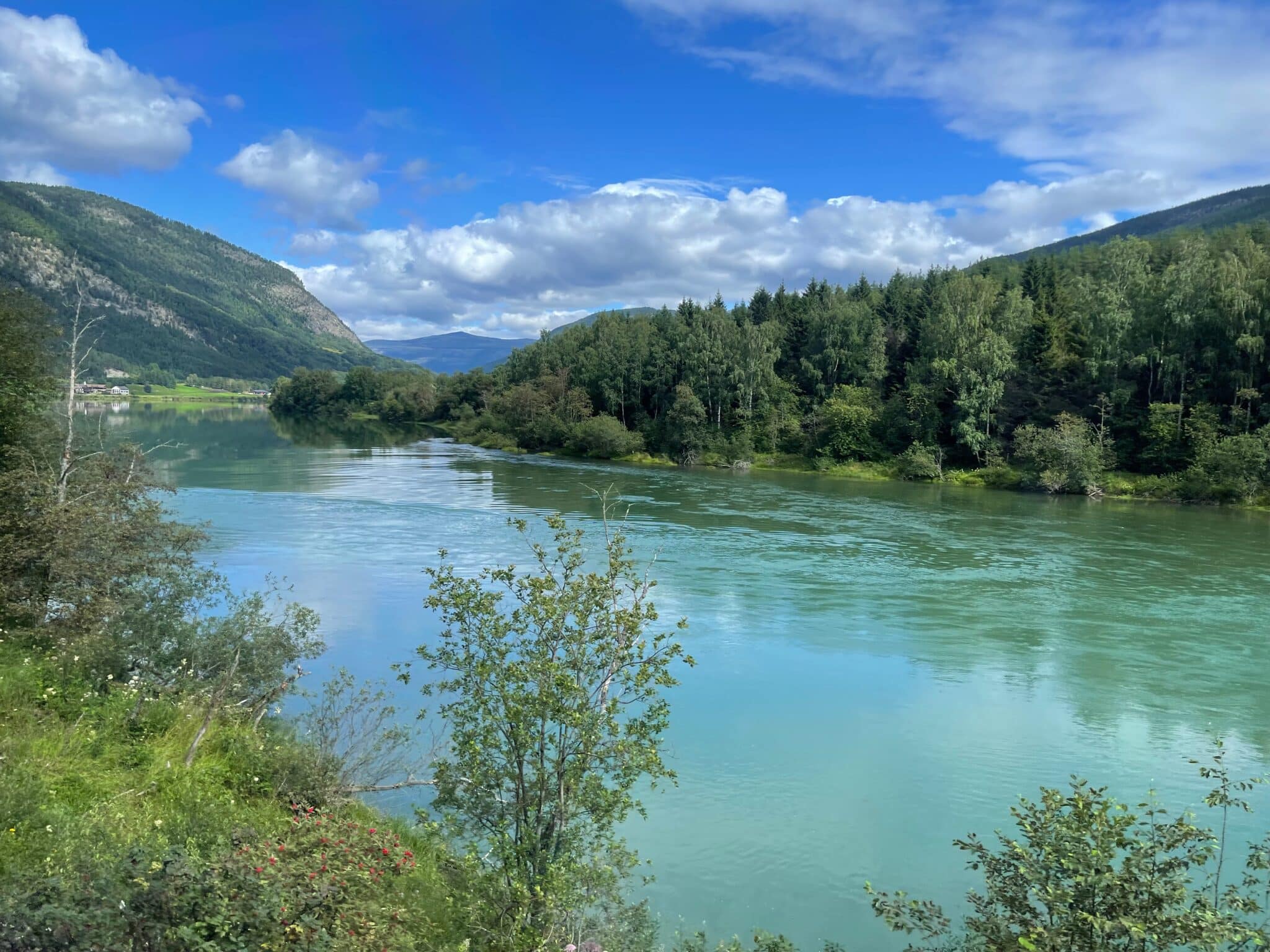
The unbroken green landscapes reminded us that Norway is the least densely populated country in continental Europe.


The train pulled into Oslo’s central station about three in the afternoon and we caught a taxi to the Citybox Hotel. The location was great, but when Nick reserved a room on booking.com he missed the fact that it was a self-service hotel and, when we got there, felt more like a youth hostel.
We decided to eat the modest cost of our one-night stay and wheeled our bags a few blocks to the four-star Thon Hotel Opera after Barbara booked a room online while standing in the City Box self-check-in lobby. The Norwegian chain has hotels throughout the country, and we had stayed in a very nice Thon hotel in Kirkenes. In Oslo, the hotel overlooked the harbor and the Opera House.

We were already a little familiar with Oslo, but we wanted to to know more. We had overnighted there the week before on our way to the fjords in the north. That time, and this one too, we walked along Karl Johans gate, Oslo’s main shopping street that’s mostly a pedestrian mall.

It runs from the railroad station to the royal palace, and the shops there and on its side streets are the same you’d find in the same area in any major city, from Zara and Foot Locker to Gucci and Louis Vuitton. Most of the strollers we saw looked to be tourists like ourselves.
We used the street that day to cut through the middle of town and circle down to the waterfront.
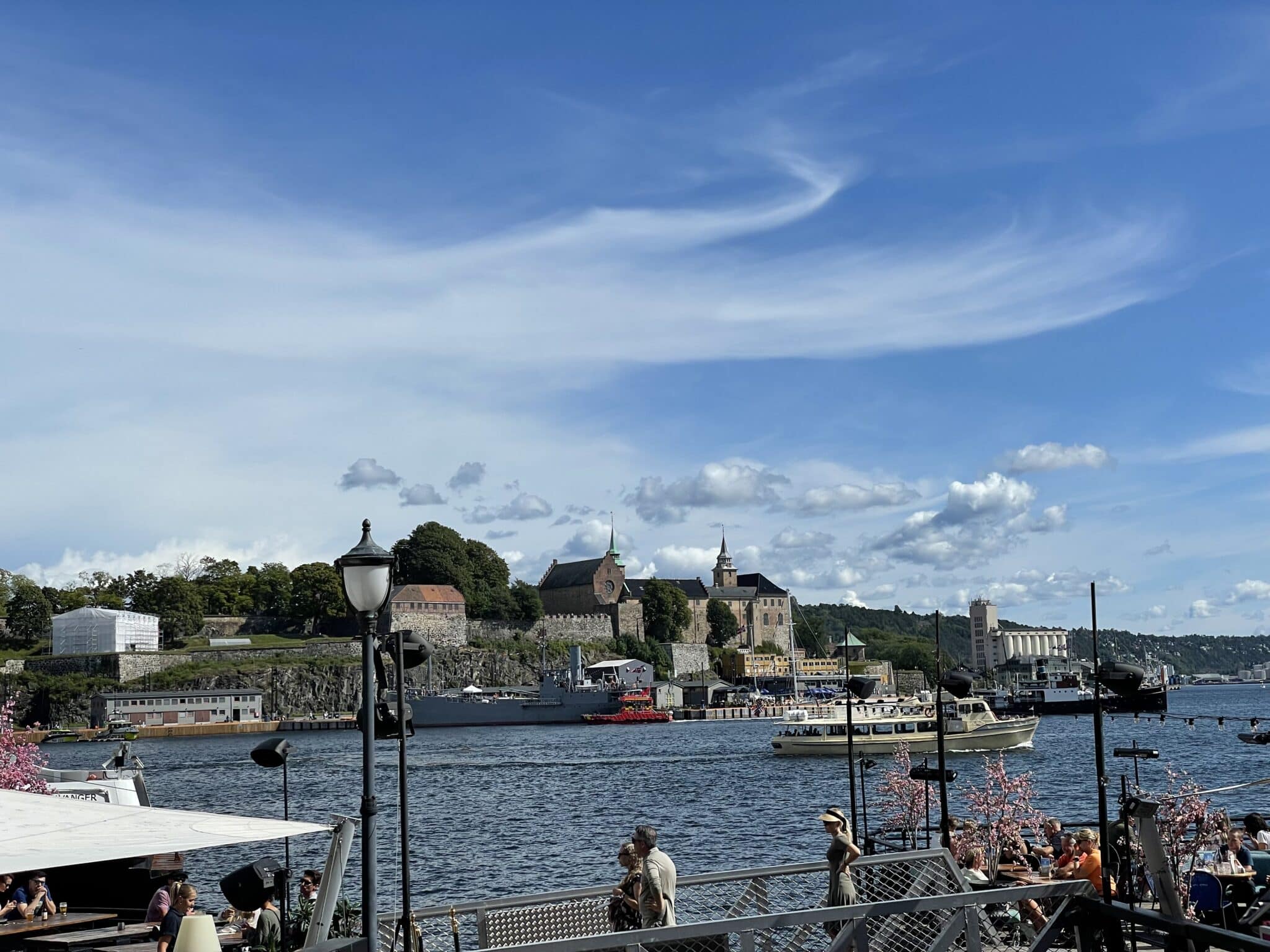
Our goal on that first Oslo visit was a harbor front restaurant called Louise known for its open face shrimp sandwiches.

The shrimp sandwich at Louise lived up to its reputation, but Barbara cut straight to the chase: plump, bright pink shrimp from the North Sea.


After lunch Nick made the acquaintance of a pelican along the waterside boardwalk. They reminded him of the birds he played alongside when he was a kid on Fort Myers Beach, Florida. This one was very calm and easygoing.

Oslo’s Viking Ship Museum was closed for renovations that will go on until 2025 or 2026. Instead, we visited the Oslo Museum of Cultural History, which had a small display of Viking gold, art and and fighting gear.
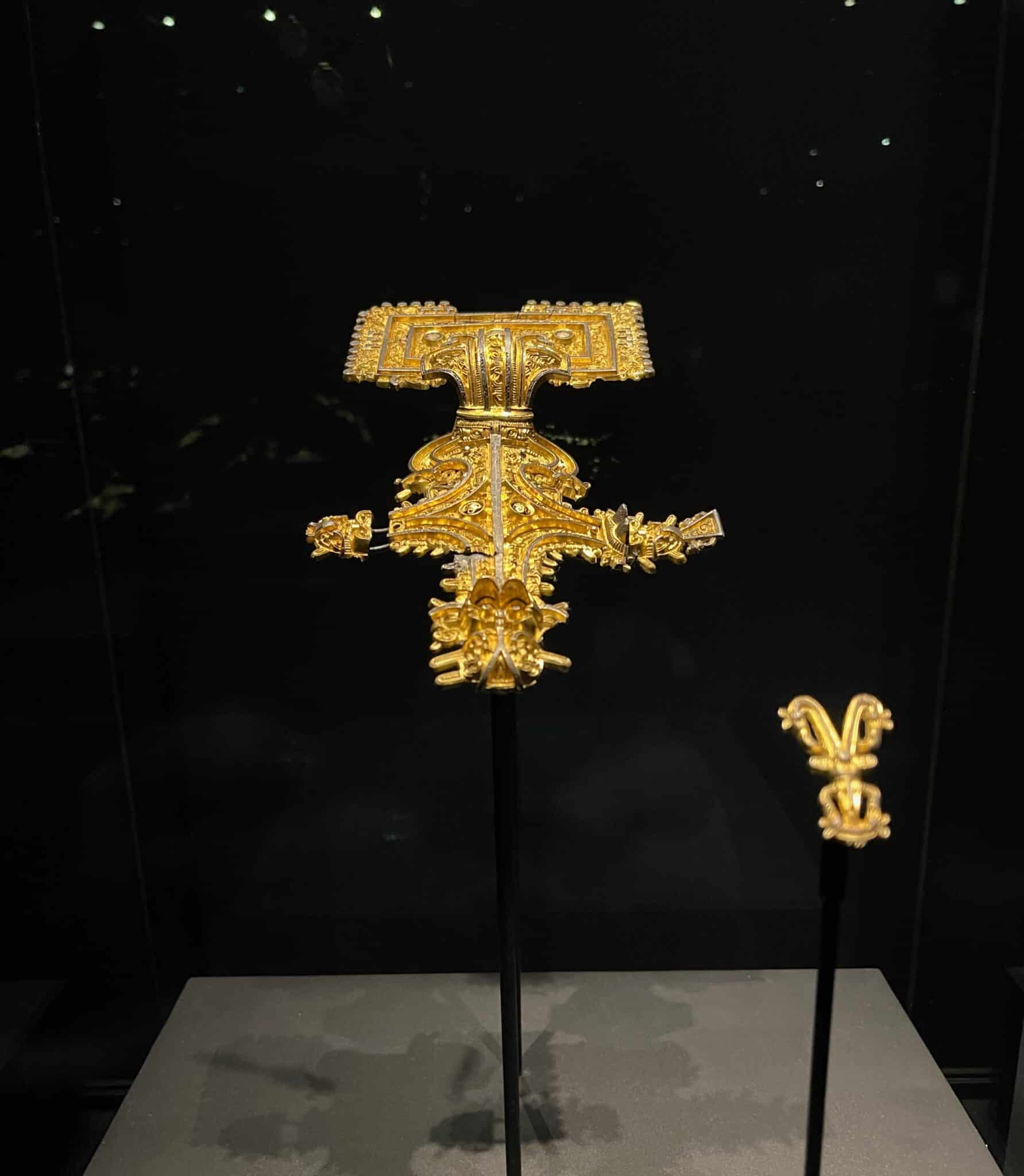
On that first part of our trip we cut short our stay in Oslo because we had to catch an early flight to Kirkenes.
The second time around, we could slow down and enjoy a good dinner. Food turns out to be a big part of Oslo’s attraction. Barbara found Sentralen, a casual, brasserie restaurant on the ground floor of a renovated bank building. Chefs working in an open kitchen offered a tasting menu of seasonal dishes with up to six courses that change frequently.

You can order all the small plate dishes a la carte. We chose a few courses that included mussels, duck breast, and wild raw halibut and everything was delicious.

We found ourselves at a table next to two guys from Santa Barbara, California. Joe Carlson, an an automotive advertising photographer, and John Onderdonk, a lawyer now working on land preservation in Pasadena. They had come to Norway to hike and camp. “You can’t believe the fresh air here,” John told us reverentially. We had experienced a lot of that, but without the backpacking. It emerged that they were staying at the City Box Hotel, which they said was comfortable.
The next day, we worked out a late checkout with the Thon Opera hotel to cram in the things we had missed. Our walk along the fjord’s harbor near the hotel took us past floating saunas and people in swimming.

Water in the Oslo fjord that day was about 62 degrees or 17 Celsius, according to seatemperature.net.

Across from the saunas, the Munch Museum was our must-see Oslo stop. We walked along the front of the Opera House and then, instead of climbing the ramp to its roof, we headed down to the street to the museum.
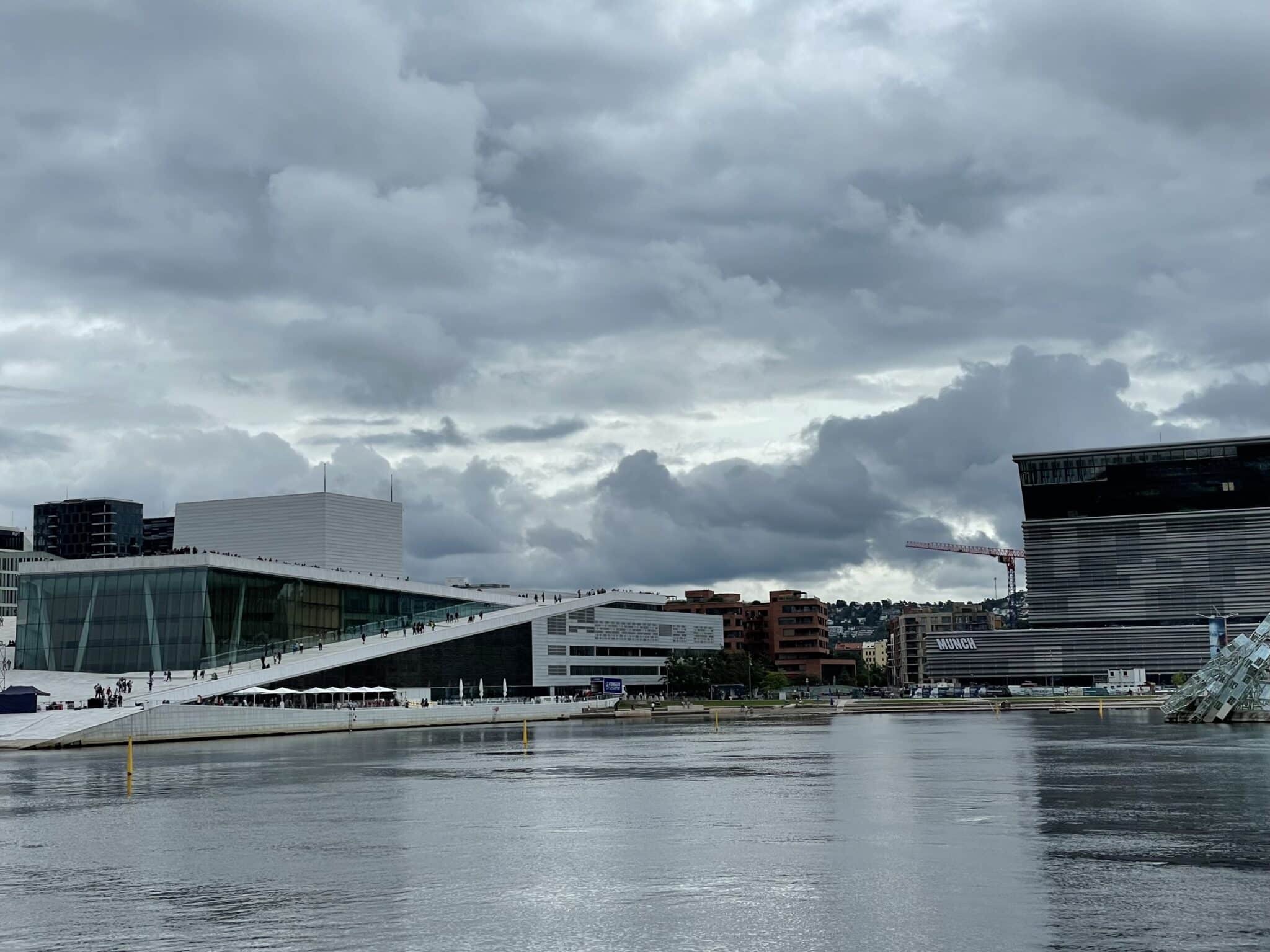
The large collection of Edvard Munch’s work, which he left to the city of Oslo when he died, was a revelation. You may be familiar with some version of his painting known as “The Scream.” He created several.

But what we saw in the museum made us think about Munch in a new way.
“The Scream” became not just an etching or a faded reprint of a tortured soul, but a vibrant look at a person having that moment. The colors jumped out at us and echoed what we saw in the light and in nature in northernmost Norway.
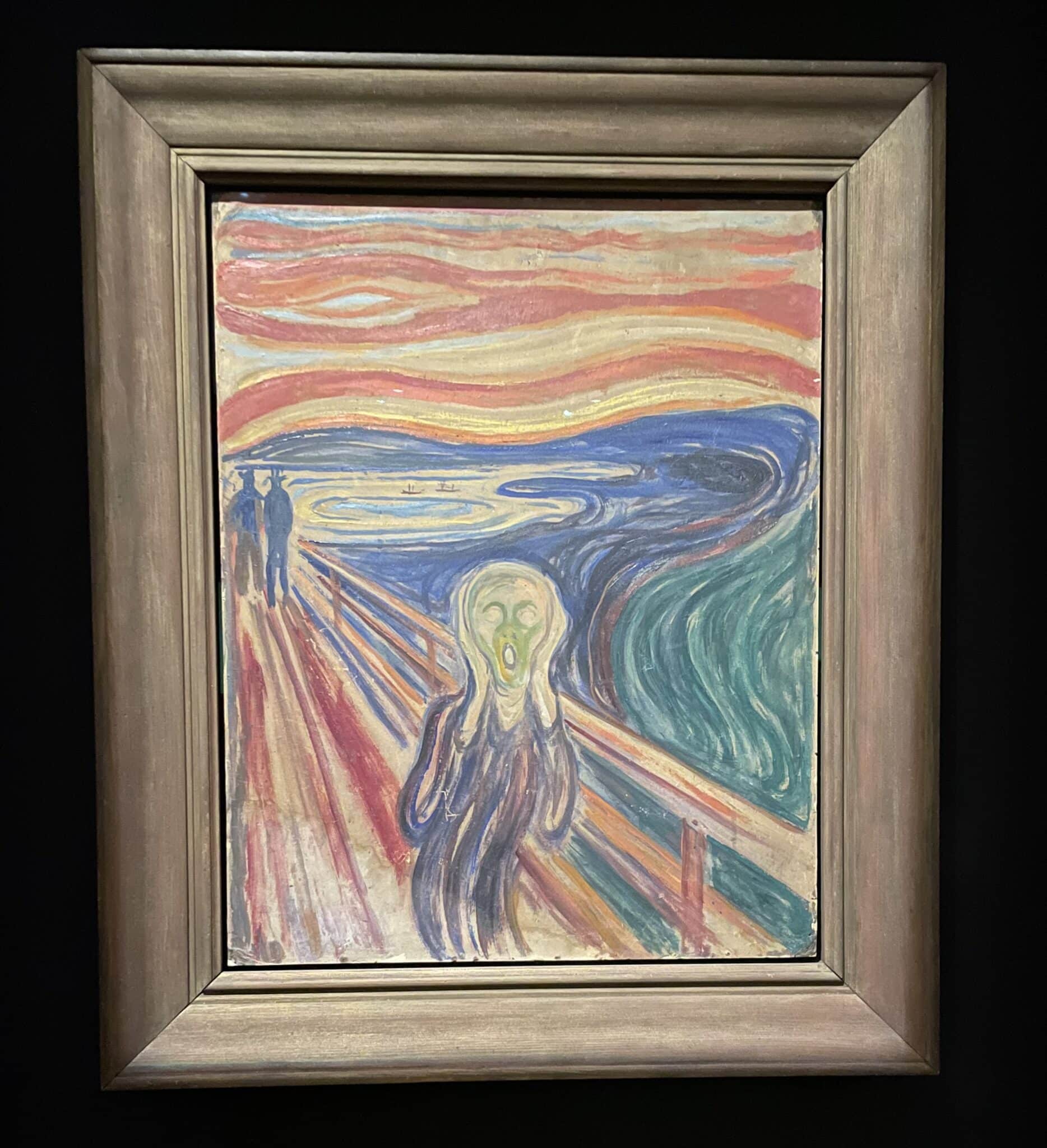
The artist, a Norway native, lived from 1863 to 1944 and as the years suggest witnessed great changes in the world. His curiosity and restless mind led him to explore themes of love and loss, sickness and death in unique ways.

Seeing so much of his prolific output under one roof was to see the psychology, often the near-madness, that propelled him. In 1907 Munch painted The Death of Marat I. The title suggests it describes Jean-Paul Marat’s well-known stabbing death by Charlotte Corday during the French Revolution. Perhaps, but it’s also a self-portrait, one of two in which Munch, lying on the bed, is the wounded victim of a gunshot to the hand while the perpetrator, standing nude in the foreground, is his girlfriend, Tulla Larsen, with whom he an especially tempestuous relationship.

Later in his career Munch grew less self-absorbed, and depicted workers with a sturdy and collective dignity.

Munch spent time in Berlin and Paris during his career, and his influences included German Expressionists and French Impressionists. In the paintings throughout the museum we saw a color palette influenced by Gaugin, van Gogh and Toulouse Lautrec, color that conveyed emotion. His frontal nudes and loose and hurried brushstrokes were scandals in the art world of his day, but in almost every work you could see his psychic explorations and search for insights. We’ve seen more beautiful artwork in museums, but never a collection that was more fascinating.

Barbara and I said goodbye to Munch regretfully. We collected our bags from the hotel and headed for the DFDS ferry for the overnight trip to Copenhagen.

The huge ferry had room for 1,790 passengers in 630 cabins and could carry 450 cars. Barbara negotiated an upgrade for us and we ended up in a cabin with a window overlooking the boat’s bow. We could sit at a small table in the room and see marine life and the small Norwegian towns as the ferry moved south down the Oslo Fjord and headed to Copenhagen.




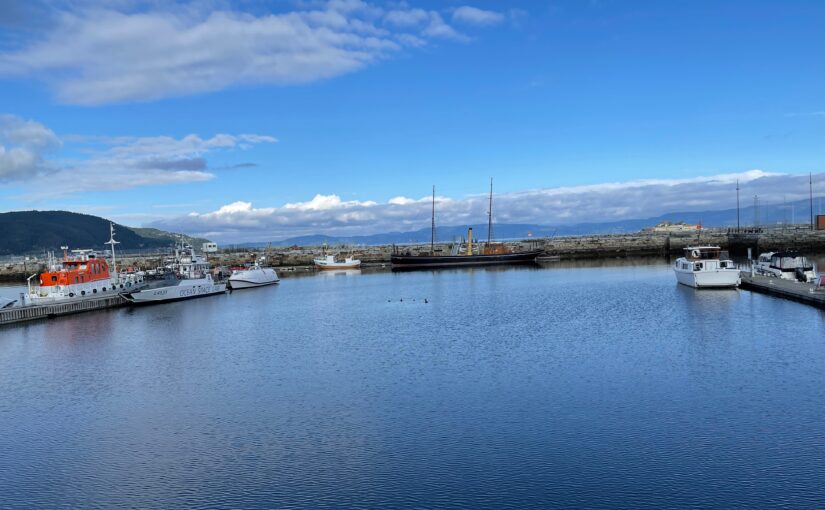

Vivid description of a wonderful trip!!!